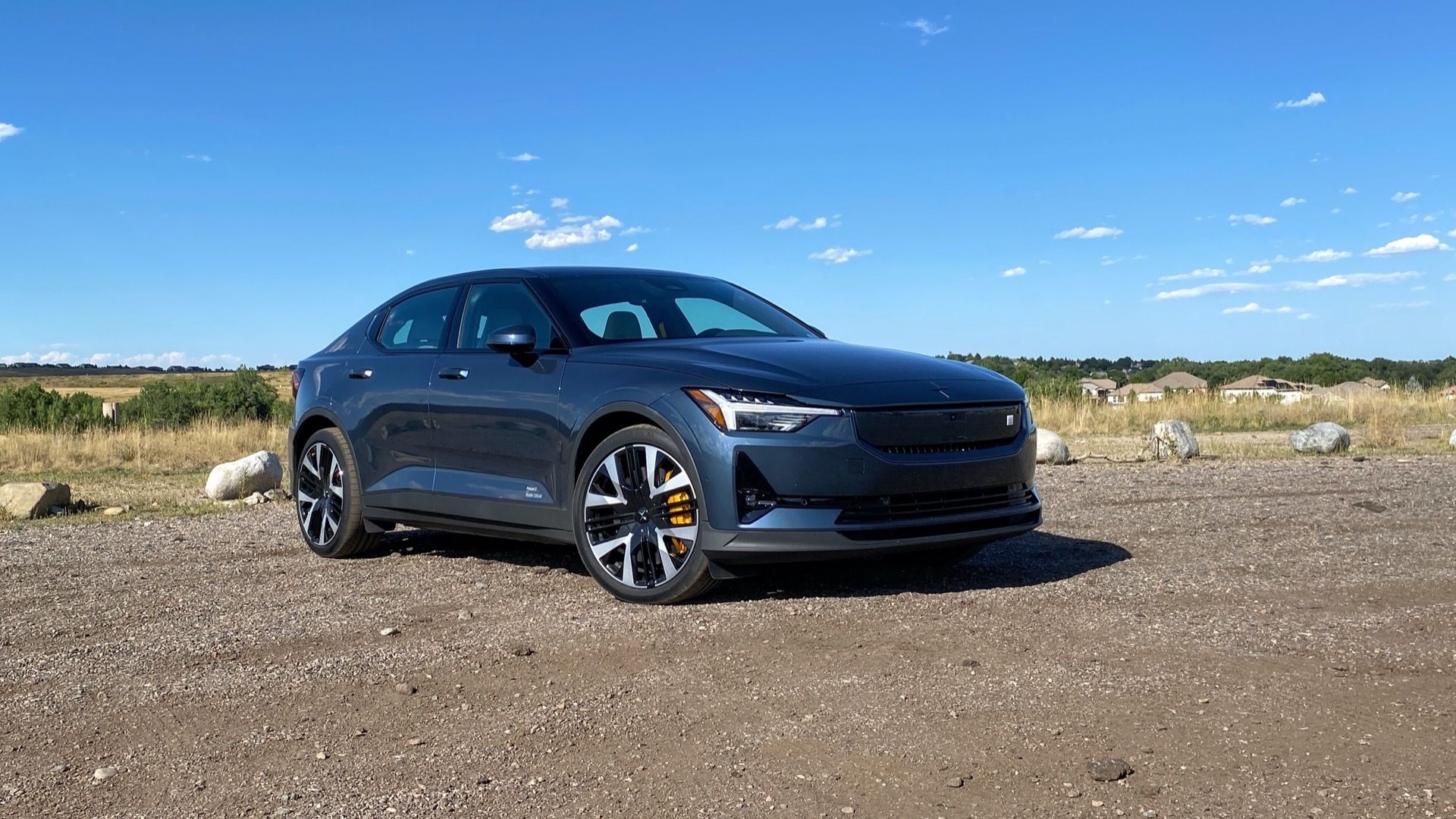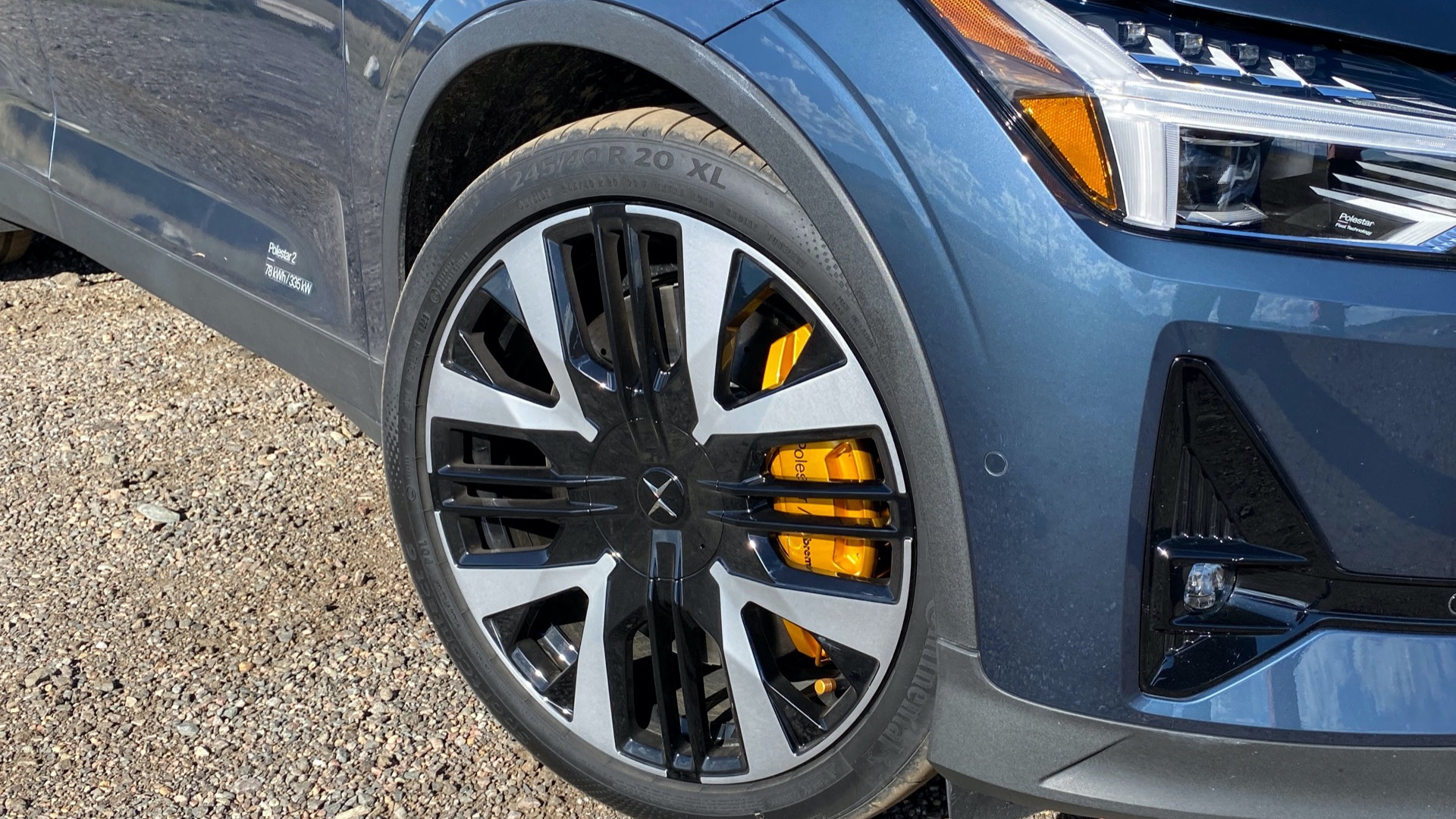The Polestar 2 has found its identity, in its fourth model year. With very little else to single it out as different, it’s pulled off an unlikely transformation—shedding its front-drive origins and becoming a rear-wheel-drive-focused performance car this year.
Based on a drive last week on some twisty Colorado Rocky mountain roads, the new base $51,300 single-motor entry model looks like the one to get—and the one that seems to get itself. It’s also the one bestowed with updated battery tech, faster charging, and an EPA range rating of up to 320 miles. Based on first impressions with range, that appears reproducible, too.
The single-motor model’s 82-kwh pack has updated CATL cells—still NCM (nickel cobalt manganese) for the U.S., just with more energy density. It also comes with quicker fast-charging—up to a peak 205 kw, from the 155 kw possible from the 78-kwh pack and its LG cells. That drops the 10-80% road-trip charge time to 28 minutes, from the smaller pack’s 34 minutes. And in either case, the Polestar 2 gets an 11-kw onboard charger, allowing a full charge on 240 volts at home in eight hours, but for slower stopgap charging, a 16-amp connector that’s 240-volt compatible is included.
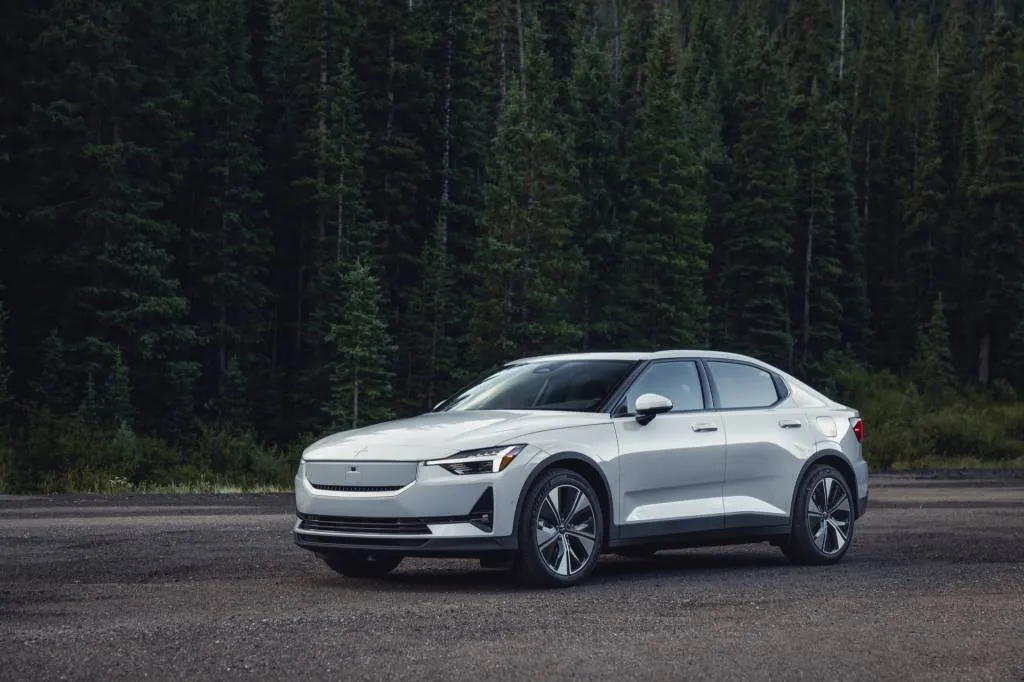
2024 Polestar 2 single motor
Front or rear motor? Who’s on first, Polestar?
Back in 2019, the Volvo executive overseeing the development and evolution of the Polestar 2 with its original sibling, the Volvo XC40 Recharge, told Green Car Reports that while their shared platform, CMA, was primarily a front-wheel-drive architecture, single-motor versions of these models could go with front- or rear-wheel drive.
Four years later, after a curveball, in the form of a single-motor front-wheel-drive Polestar 2, that “you will have to see” comment has been pitched to the plate, with rear-wheel-drive versions of these models, which clearly seek—and find—more of the traditional European performance-car flavor they’ve hinted at all along.
To get there, Polestar dropped next-generation motors and inverters into the 2. The Polestar 2 is Swedish-engineered, but it’s built in China (sorry, no tax credit) and dips deep into the ecosystem of its parent company Geely. The new motors follow the same design as those that now go into the 2024 Volvo XC40 Recharge and C40 Recharge, but they’re sourced from China rather than from Sweden.

2024 Polestar 2 single motor
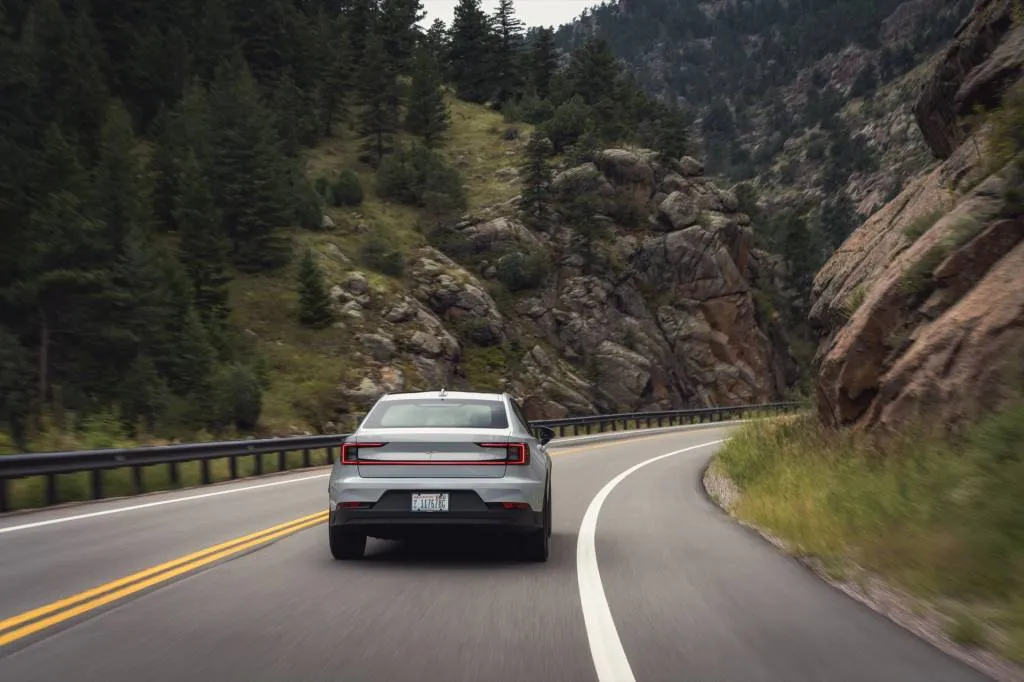
2024 Polestar 2 single motor
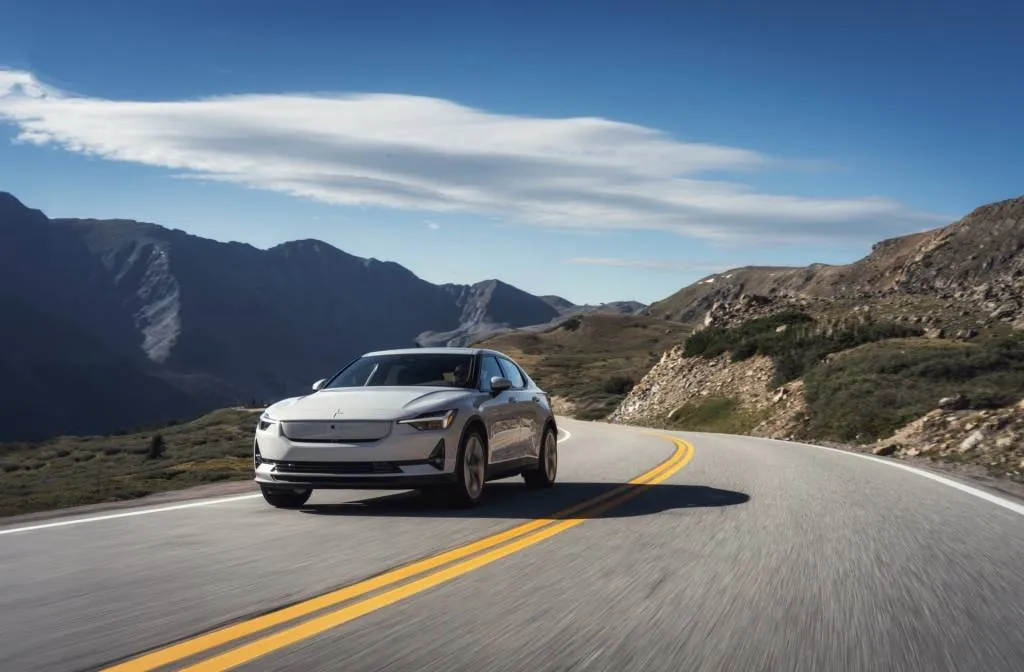
2024 Polestar 2 single motor
The new permanent-magnet motor used at the rear wheels gives single-motor versions a rating of 299 hp and 361 lb-ft of torque, allowing a 0-60 mph time of 5.9 seconds. Dual-motor Polestar 2 models get a new motor in front, too—an asynchronous (induction) motor that can effectively coast along during light-load cruising conditions, leaving the power delivery to the rear wheels. It adds twist when the traction is needed or in all-out acceleration for the combined power delivery, adding up to a combined 421 hp and 546 lb-ft of torque—or 455 hp and the same torque rating with a software-enabled boost in Performance Pack models, enabling 0-60 mph in 4.1 seconds.
Polestar also says they’re a great pairing with this model’s newfound rear-drive dynamics when buyers want to add AWD. While the permanent-magnet motor in back provides the near-instantaneous kick, the front motor’s delivery is less abrupt.
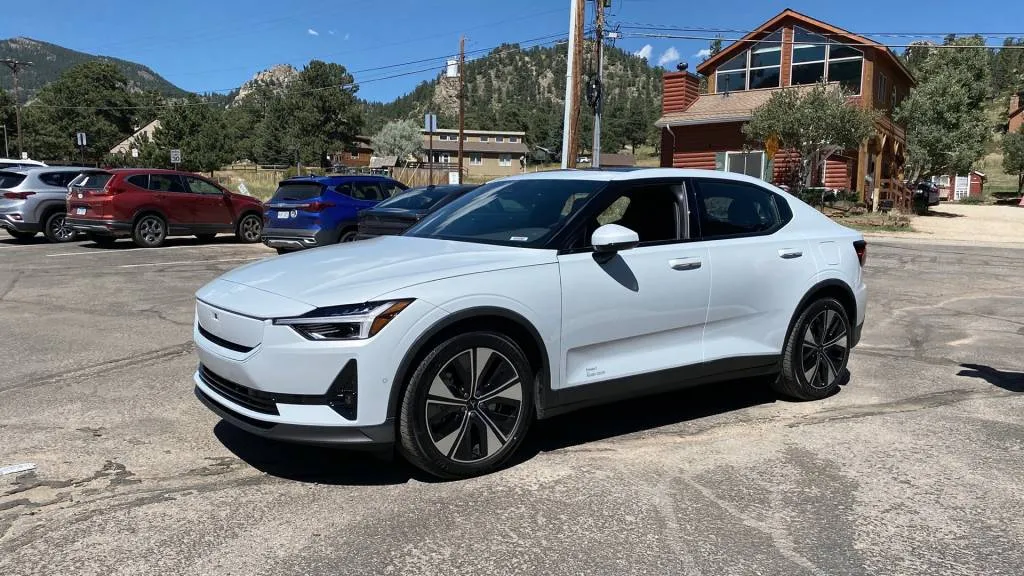
2024 Polestar 2
Electric crossover—just not of the utility kind
The Polestar 2 is about six inches shorter than the Model Y and Model 3. Meanwhile, it’s taller than the Model 3 but shorter in height than the Model Y.
That said, it drives low and nimble, much more like a sedan such as Model 3 or Ioniq 6 than the rapidly expanding array of other electric crossovers. If you can filter out the high beltline, it feels like you’re driving a relatively low-set vehicle.
The Polestar 2 remains built on Volvo’s CMA platform, shared with the gasoline Volvo XC40, the electric XC40 Recharge, and the related C40 Recharge, plus various other overseas models under the Geely umbrella. Here, the pack is T-shaped, running below the center console of the vehicle and just below the back seat. That has packaging advantages in that it allows a low seating position—for those in the front seat—but it has more of a cockpit layout than the spacious, airy front-seat impression of other modern EVs.
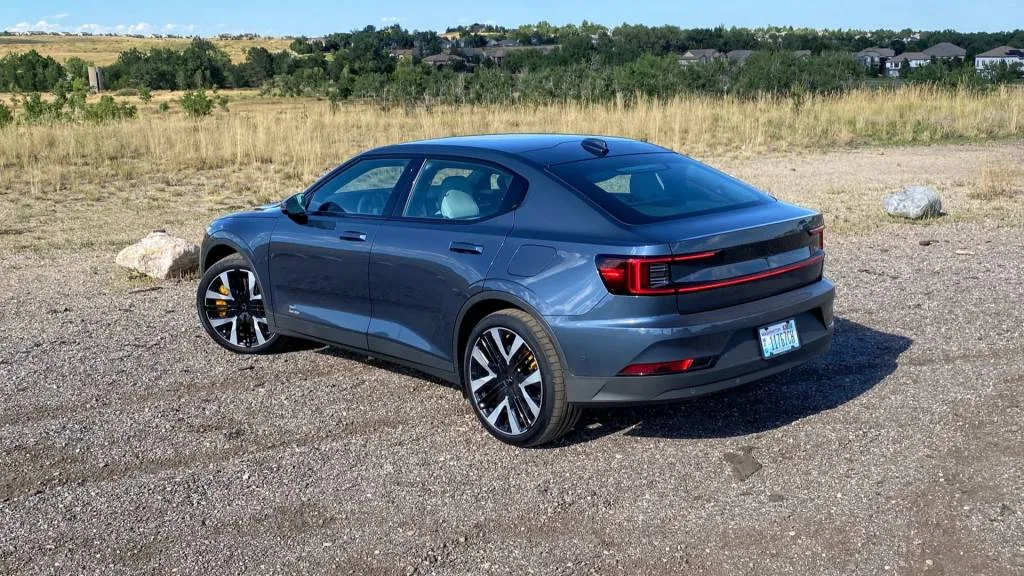
2024 Polestar 2
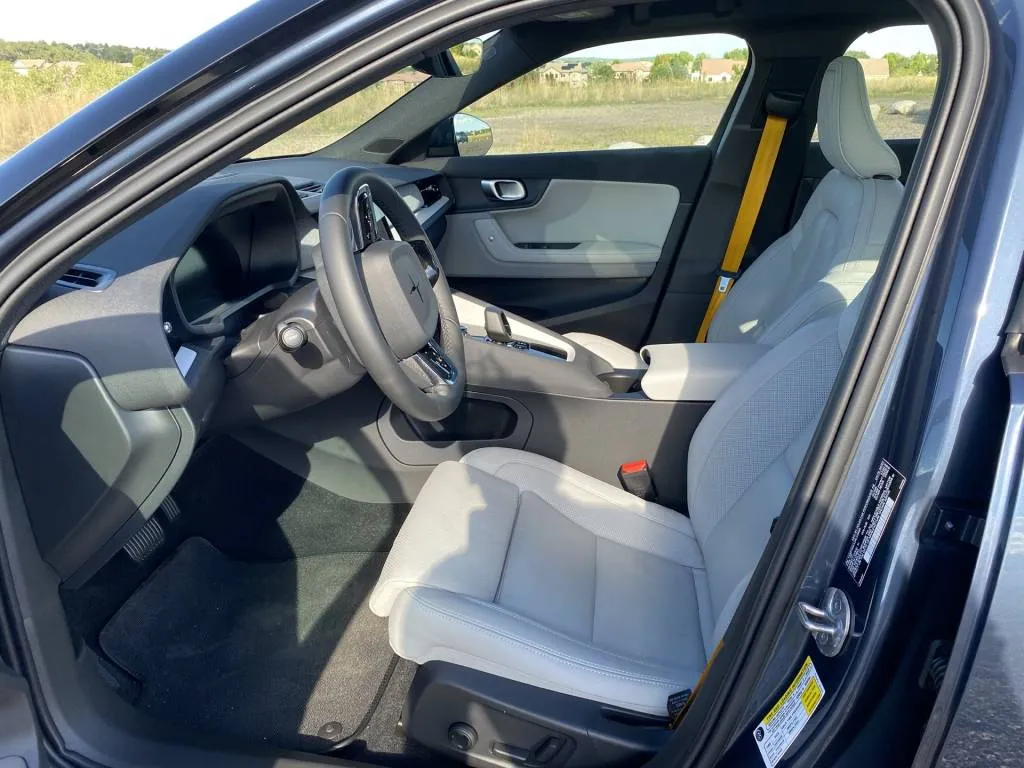
2024 Polestar 2
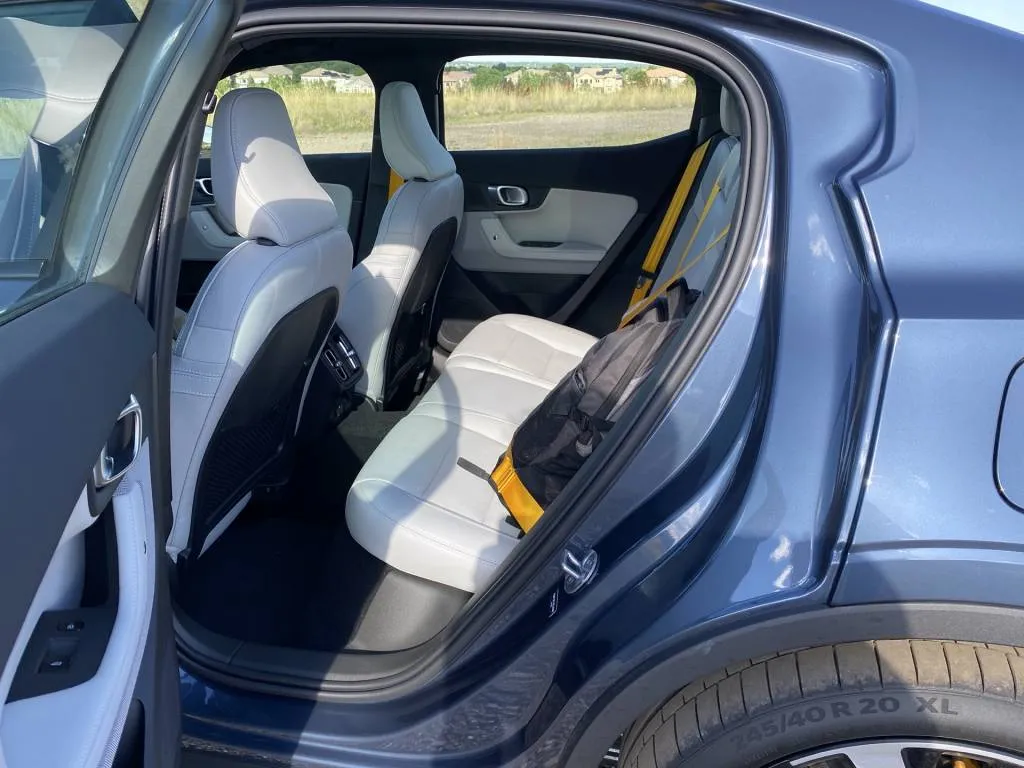
2024 Polestar 2
The layout yields a higher seat point for those in back. Getting in and out of the back seat is a little strange too, but that has more to do with the unexpectedly short rear door cuts. The rear doors themselves suggest from the outside that it’s going to be easier, but taller occupants will find it’s a pinch to get in and out.
In this major motor switcheroo, the driving attributes of the Polestar 2 when you first get into it haven't changed much. And neither has the packaging. The motor itself rests on a subframe that itself is different, but the geometry of the front and rear suspension hasn’t changed. The seating position and cargo spaces front and rear are also carry over—and the 1.2-cubic-foot frunk and 14.3-cubic-foot rear cargo hold remain the same either way. Flip the seats forward and it can be boosted to 38.7 cubic feet.
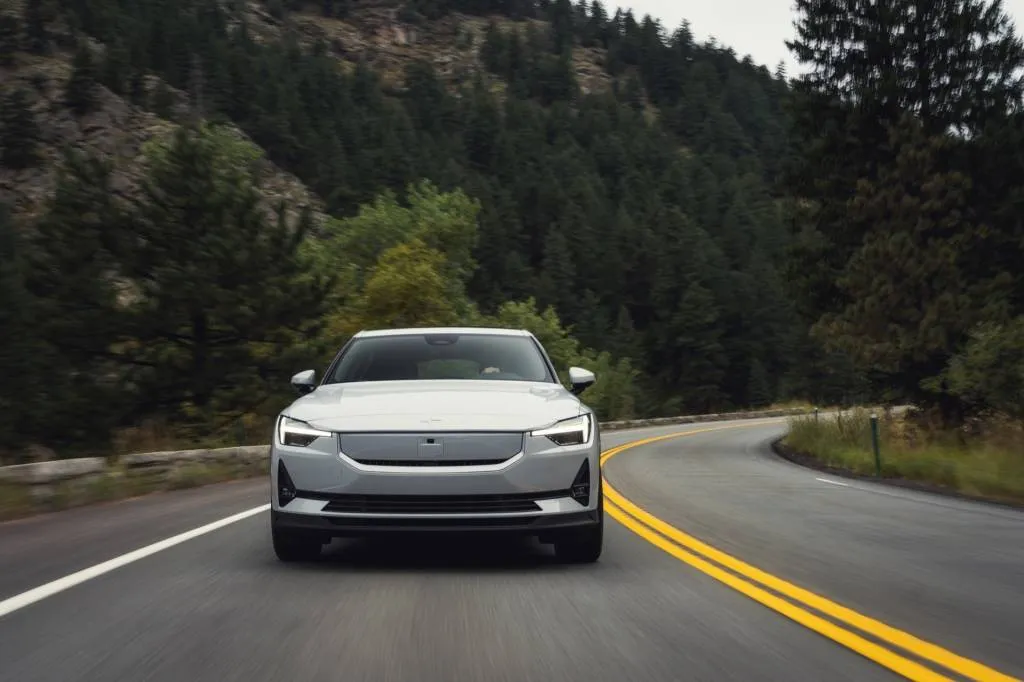
2024 Polestar 2 single motor
Making sense dynamically—just not for everyone
In a route that took us through Denver city streets, out on freeways, then on Rocky Mountain highways past Boulder to Estes Park and back, it was initially quite apparent in our single-motor model that Polestar had dialed up firmness somewhat for the setup. With the base 19-inch wheels and tires, there’s a fair amount of road noise—perhaps more than the outgoing models. Overall, it’s a brittle, potentially noisy ride for urban commuting and might not be for everyone.
As soon as the roads became twisty, it all started making sense. While the Polestar 2 still feels heavy, it’s a great deal more nimble, and at its best in the single-motor rear-drive setup. It’s a road feel that’s not unlike that of older AMG models and M cars—just heavier.
For the most part, this revised model doesn’t have the previous model’s uncertainty on center when unwinding between tight corners, although especially in the dual-motor model it remains a weak point, without much road feel or weighting. But I noticed my preferences changed versus previous versions; here the standard or firm steering settings seemed more appropriate for the car.
While I liked the single-motor version better in most ways, the regenerative braking simply doesn’t feel like it was coming on as strong in the rear-wheel-drive model as it did in the front-wheel-drive model—even though, by the specs, Polestar says that it can pull up to 100 kw from brake regen, which is the same as AWD models.

2022 Polestar 2
Separately, dynamic settings are accessible on a simple menu screen. There, you can set the steering feel as light, standard, or firm; turn one-pedal drive (and brake regen) to standard, low, or off; and toggle creep (whether the car inches forward with a lift of the brake pedal).
After a car swap, we were off for a stint in the dual-motor version, with the Performance Pack, adding up to $62,200. While much quicker—gasp-inducing, really, at foot-to-the-floor blasts—it simply didn’t feel as balanced or at ease with itself as the rear-wheel-drive version. There was one exception, though; oddly, it had less road noise and more of a refined ride keeping out road coarseness—likely more related to the soft summer performance tires than the dampers.
Single- and dual-motor versions of the Polestar 2 include twin-tube, frequency-dependent dampers, with a front-strut, rear multi-link suspension arrangement. Models with the $5,500 Performance Pack add Öhlins monotube dampers. They’re manually adjustable, and the version I drove was set to the middle of three settings.
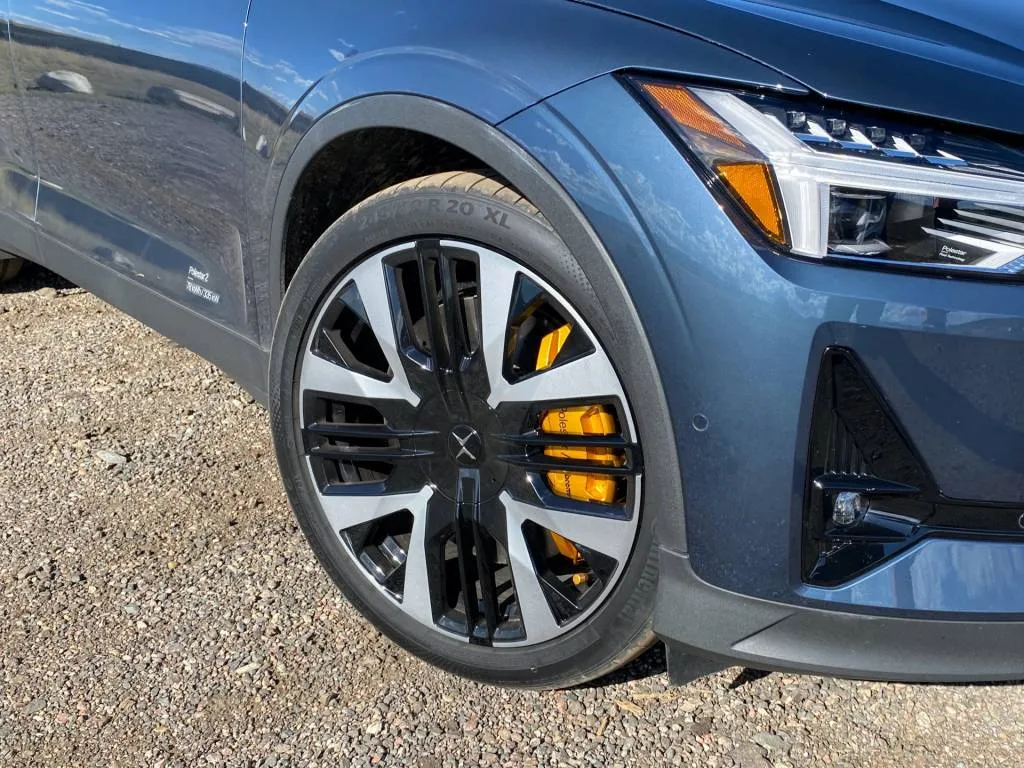
2024 Polestar 2
Performance Pack versions also add Brembo 4-piston calipers in front, with larger drilled-and-ventilated aluminum discs (in place of the standard solid steel discs), plus larger steel discs in back, as well as 20-inch forged alloy wheels in a new Y-spoke pattern and wearing Continental SportContact 6 performance tires.
The weight distribution isn’t all that much different across versions—because the heavy battery pack remains in the middle. All-wheel-drive Polestar 2 models remain at a 51/49 weight distribution front/rear. Front-wheel-drive Polestar 2s were never that far out of balance, at 55/45, but the rear-wheel-drive Polestar 2 flips that to 48/52. Overall curb weights of the single- and dual-motor for 2024 are at 4,429 and 4,647 pounds, respectively—up very slightly vs. 2023 for the single-motor. Yes, that’s still a few hundred pounds more than the Tesla Model 3, when equipped with about the same battery capacity, but not much more than the Hyundai Ioniq 6.
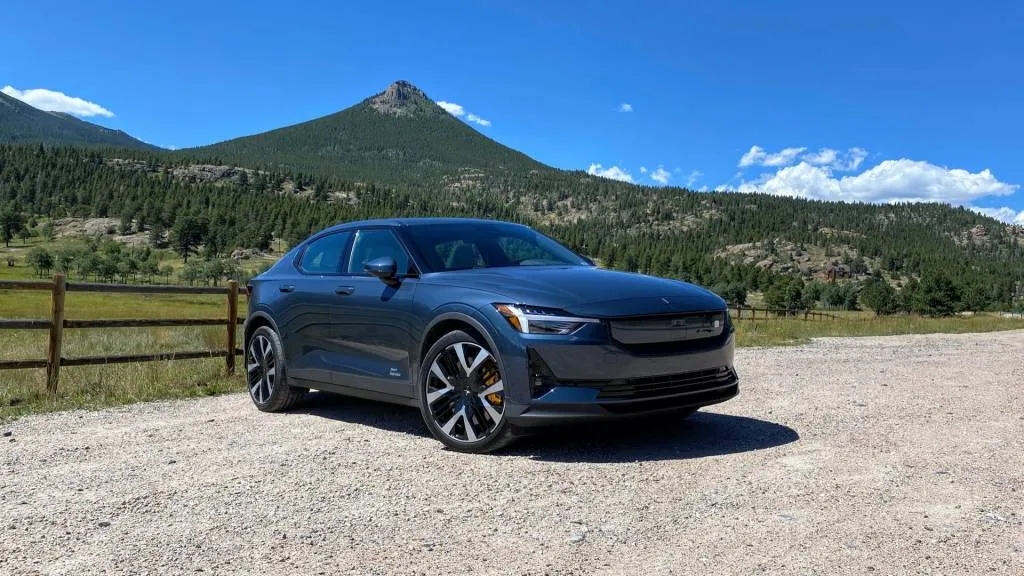
2024 Polestar 2
Polestar 2 efficiency details
Our drive route took us a couple hours from the mile-high city—ascending another nearly half-mile in elevation. On it, we averaged nearly 3.8 miles per kwh over about 90 miles, according to the trip computer. Then over about 110 miles for the return, meandering a bit off-route, we saw 4.1 miles per kwh. There was no effort to drive efficiently on this route—rather to enjoy the drive and alternate between enthusiastic and touring styles. Outside temps were in the 80s.
The Polestar 2 comes in three different models—long range single motor, long range dual motor, and long range dual motor with Performance Pack. Those latter two models, by the way, are rated at up to 276 miles and 247 miles, respectively.
The standard-feature list is impressive, with power-adjustable front seats, a power tailgate, rain-sensing wipers, and front, rear, and side parking sensors all included.
All Polestar 2 versions include a blind-spot warning system, cross traffic alerts, rear collision warning, and up to nine airbags.
Optional on all models is the $2,200 Plus Pack, which includes a heat pump, heated rear seats, a heated windshield, heated windshield-washer nozzles, front-seat cushion extenders, memory driver-seat settings, a digital-key system, and a panoramic roof, among other extras. Polestar’s focused driver-assistance features come as part of the $2,000 Pilot Pack (included with dual-motor models), adding adaptive cruise control, including Pilot Assist functionality for braking and lane-keeping smarts up to 80 mph. Standalone options are limited to ventilated Nappa leather, metallic paint, a folding tow bar (2,000 pounds!), and 20-inch alloy wheels.
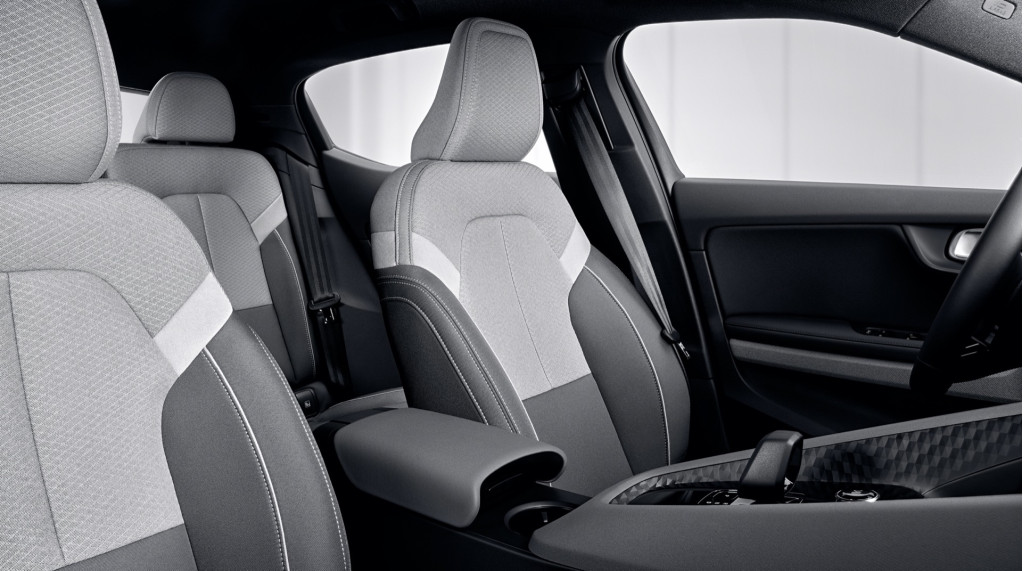
2023 Polestar 2
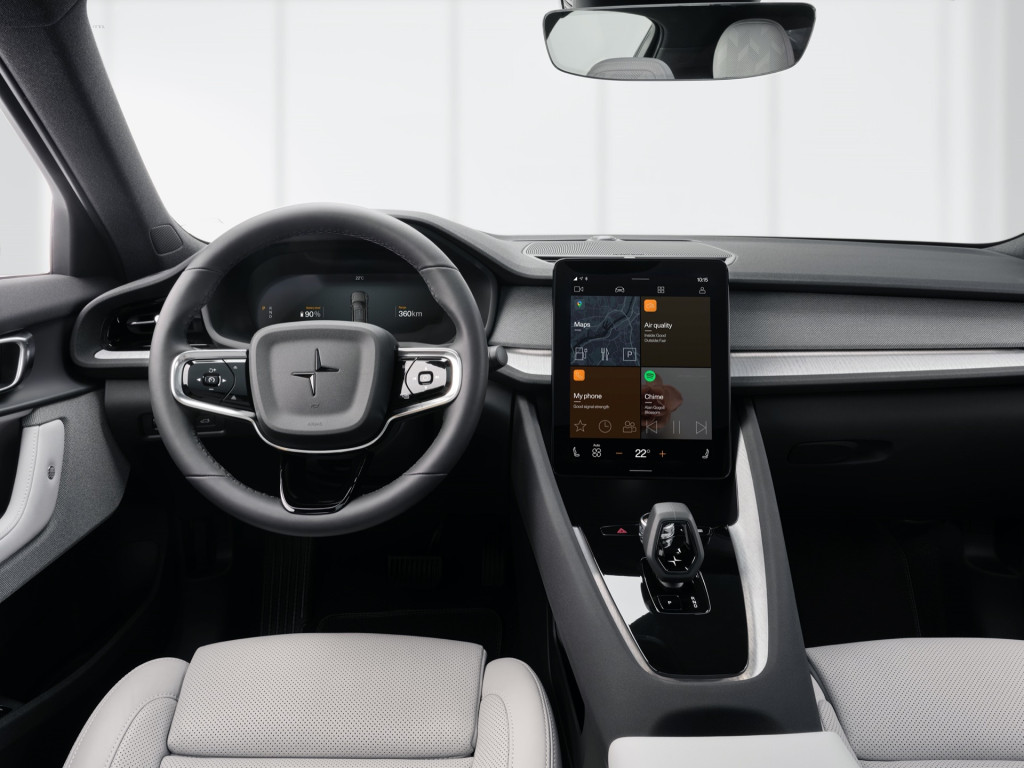
2023 Polestar 2
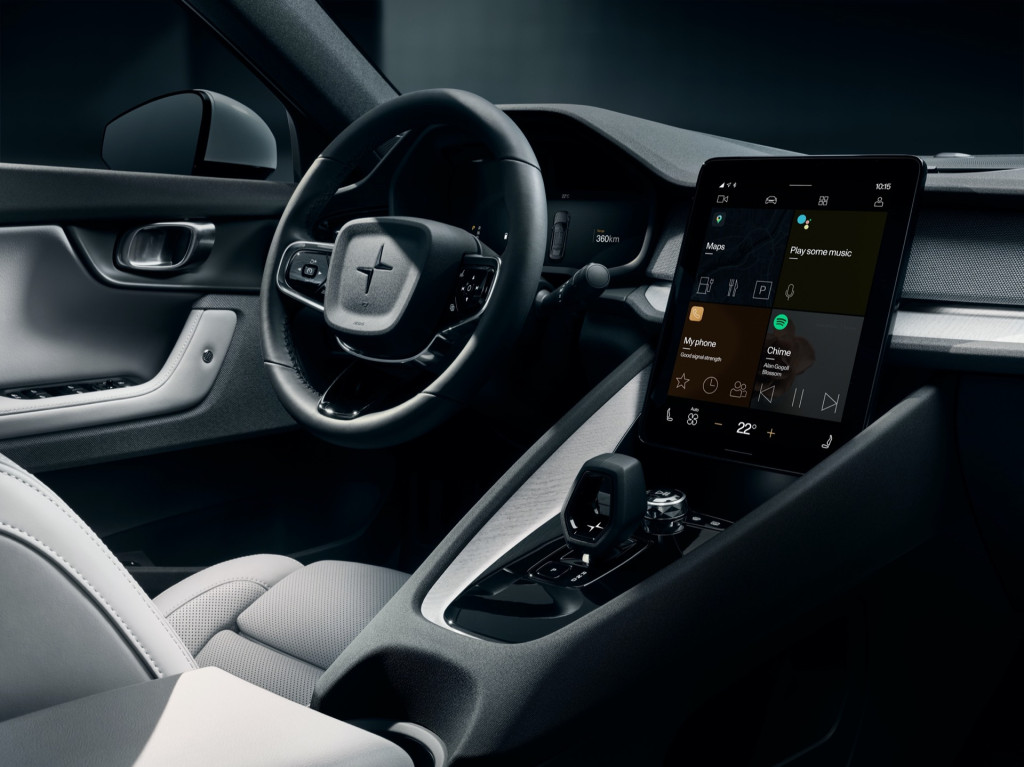
2023 Polestar 2
While I like the relatively minimalist gauge cluster and switchgear—including how it does away with the power/ignition switch—I’m still not a fan of the rest of the interface. Some climate controls require digging into the screen interface, and audio entertainment relies more heavily on the data connection than in other vehicles. If you live around your Android phone and the Google ecosystem, you’ll find this interface to be especially easy.
The system includes data service with Google connectivity for three years, with a complementary Polestar Connect service and app. Over-the-air updates will be provided for the life of the vehicle, it says.
And if you hadn't noticed from the photos, the most noteworthy design change for the 2024 models is the incorporation of active-safety sensors beneath a neat cover in front.
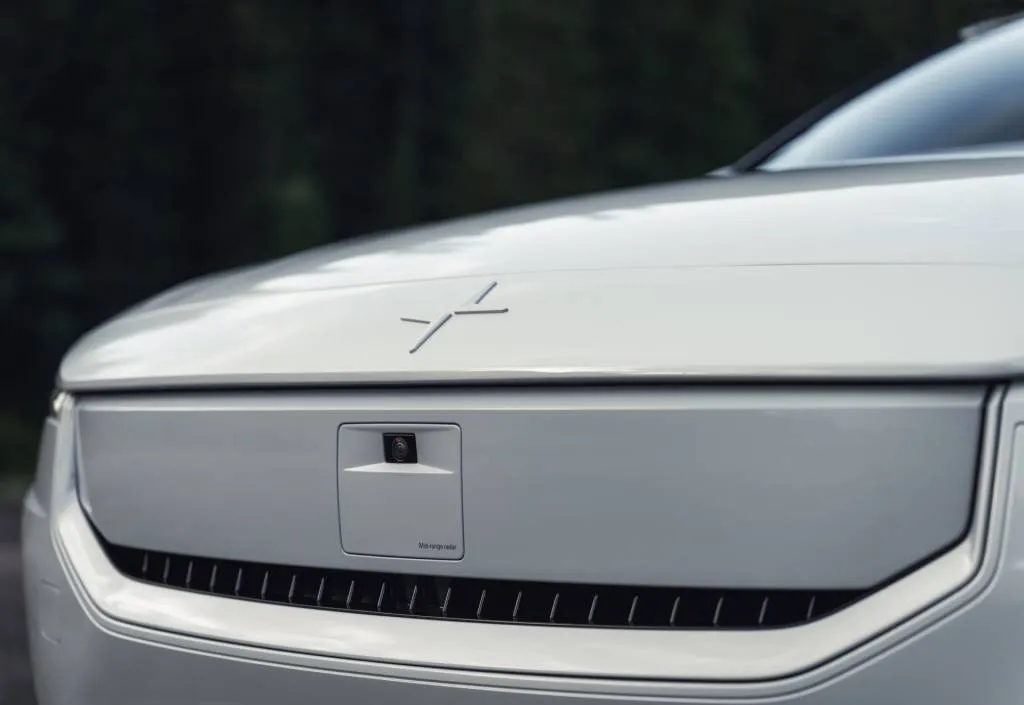
2024 Polestar 2 single motor
Polestar 4 comes between 2 and 3
As transformed as the Polestar 2 might be with this, it’s a late bloomer and Polestar the brand is ready for a visual second act. Apart from the 375 rare Polestar 1 PHEVs sold in the U.S.—most sitting in collectors’ garages—the 2 is the first face of Polestar. Further, this design looks little different from the Volvo concept car it started with, which was first shown more than eight years ago—Thor’s hammer daytime running lights and all.
That’s going to start changing soon, with more visual separation from Volvo starting with the South Carolina–built Polestar 3 that arrives next year, and the $60,000 Model Y–rivaling Polestar 4 soon following. Then, a year or two later, Polestar-exclusive drive components will arrive with the Polestar 5 flagship performance EV and the Polestar 6 electric roadster ready in 2026 to chase the Tesla Roadster 2.0, whenever that might arrive.
With that in mind, does the Polestar 2 make a lot of sense in dual-motor Performance Pack form, topping $62,000? Versus the Kia EV6 GT, the Tesla Model Y Performance, or the Hyundai Ioniq 5 N, it doesn't feel as exhilarating. But at just over $50,000, the base Polestar 2 is a hoot as a rear-drive, Euro-flavored electric-car anomaly.
--
Polestar provided travel and accommodations in order to facilitate early product access.
